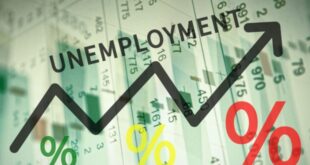For the first time in nearly two and a half years, the region’s purchasing managers index has fallen below 50. The next two reports will determine if that was an aberration or a trend.
For at least another month, there will be some apprehension about the Inland Empire’s manufacturing sector.
That’s because, for the first time since December 2016, the region’s purchasing manager’s index has fallen below 50, the benchmark that determines whether manufacturing in Riverside and San Bernardino counties is expanding or contracting.
No one should panic, because three consecutive months in either direction are needed to establish a trend.
But there’s no question that the June report, which was released July 1, was a surprise, if not an outright shock, to everyone familiar with the monthly study. The index went from 54.5 in May to 46.3 in June, a steep and unexpected drop.
May was the 29th consecutive month the index had registered 50 or better, matching the previous record that was set from December 1995 through April 1998. With employment up and the economy strong, there was every reason to believe that the index would top 50 in June, setting a new record at 30 consecutive months.
“In summary, the Inland Empire manufacturing sector and overall economy have been in growth mode for nearly two and a half years,” the index stated in its summary. “There is nothing in this month’s data to indicate that the trend will not continue for at least the next three months.”
Barbara Sirotnik, director of the Institute of Applied Research and Policy Analysis at Cal State San Bernardino, the publisher of the monthly report, sounded optimistic when she spoke to IE Business Daily regarding the index’s immediate future. But she also said something that, in retrospect, was prescient.
“I’m hearing a lot of concern about tariffs from the people I talk to,” Sirotnik said last month. “They’re afraid of tariffs because they don’t know what impact they’ll have.”
Sirotnik was referring to the Trump Administration’s trade wars with various countries, particularly Mexico and China.
Last month, Trump backed away from his threat to impose tariffs on all Mexican goods shipped to the United States, and early this month he declared that he would add no more tariffs on Chinese goods, easing a potential trade war that some analysts said could have damaged the global economy.
Both of those developments eased concerns about major trade wars, at least momentarily, and maybe that reduced tension will show up in the July index, which is scheduled to be released Aug. 1.
In the meantime, the June report must be dealt with, and it’s not pretty.
First was the 8.2 drop, an unusually large decline regardless of the time of year, or pairing of months, according to Sirotnik.
Second, most of the categories that make up the index- commodity prices, production, new orders, inventory and employment – were headed in the wrong direction, although that’s probably to be expected during an eight point drop.
Only supplier deliveries improved, to 58.3 from 53.4.
Finally, only 18 percent of the purchasing managers surveyed said they expect the local economy to improve during the next three months. The rest said they expect it get stronger – also 18 percent – or remain the same – 64 percent – during that time.
“Maybe it’s an aberration,” Sirotnik said. “I think there’s a chance that’s the case, because the national economy is doing well and the index usually lines up with the national economy. So the sky isn’t falling, but it’s a troubling indicator. You never want to see the index go below 50. You want to see everything growing.”
One reason it might not be an aberration: A drop in manufacturing is often the first sign of slowdown in the economy, if not a recession, which is usually defined as a decline in the gross domestic product for two straight quarters.
“We were one of the first to see the recession coming on in 2007,” Sirotnik said. “I can tell you that what we’re seeing now is nothing like what we were seeing then.”
The national purchasing managers index has been down lately, so it probably shouldn’t be a surprise that Inland index is down, said Jay Prag, professor of economics at Claremont Graduate University’s Drucker School of Management.
I think Trump’s tax cuts helped the economy, but their impact is starting to wear off,” said Prag, a Trump supporter. “I know it’s only one month, but I am concerned because no wants to see a slowdown in manufacturing.”
Because taxes have been cut recently, there’s a shortage of remedies if there’s a longterm manufacturing slowdown: Trump’s reworking of the North American Free Trade Agreement would help, but getting that through a Democratic-controlled House of Representatives will be difficult, Prag said.
Prag called it “encouraging” that Jerome Powell, chairman of the Federal Reserve, has indicated he would support a one-quarter cut in interest rates.
“I think we need to get all of our trade agreements squared away,” Prag said. “If we do that, we should be OK. I think a cut in interest rates would also help, because a lot of what gets manufactured are big items that are bought with borrowed money.”
Mostly because of the possible tariffs, manufacturers have been dealing with uncertainty, which is the one thing they don’t like, said Bud Weisbart, co-owner of A&R Tarpaulins in Fontana.
“All manufacturers like a stable market,” said Weisbart, whose company makes tarps for the aerospace industry. “The markets will go soft if there isn’t some stability. No one knows what impacts tariffs will have.”
 IE Business Daily Business news for the Inland Empire.
IE Business Daily Business news for the Inland Empire.


